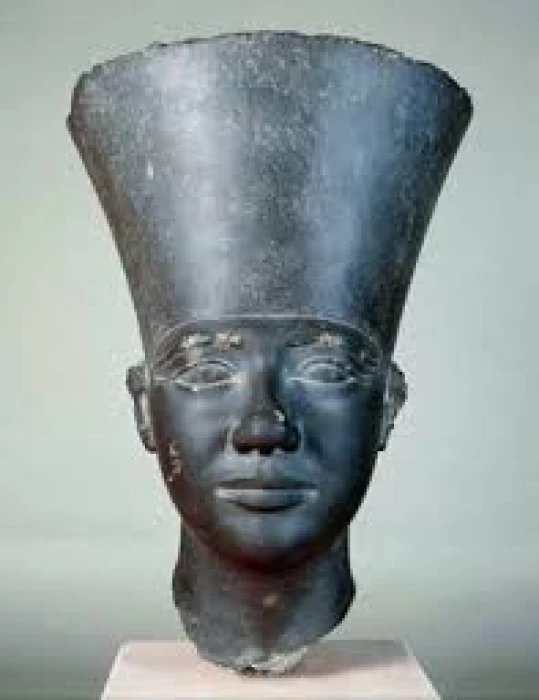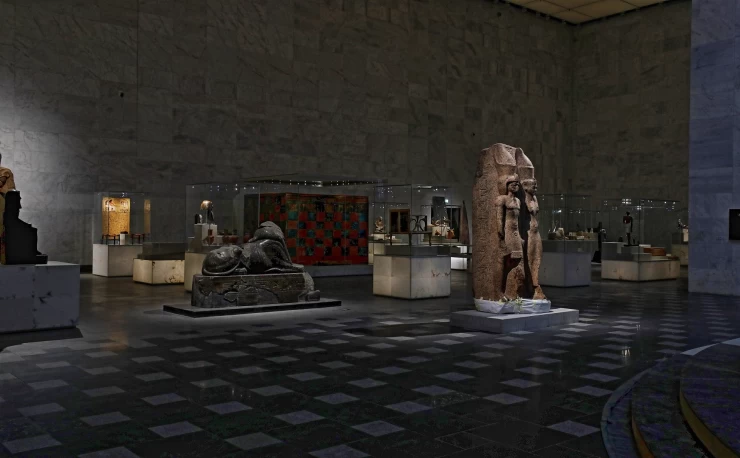
King Userkaf
King Userkaf
During his reign, the influence of the priesthood of Heliopolis and the solar cult of Amun had their main center in that city. Proof of this was the erection of the first solar temple, in Abu Ghurab, a structure that would become usual throughout the 5th dynasty; of the temple, known as the Court of the offerings of Ra, only a few traces remain: however, one of his titles in a palette was found, among the masterpieces of the art of the time.
Userkaf's reign might have witnessed a recrudescence of trade between Egypt and its Mediterranean neighbors thanks to a series of marine expeditions, which are represented in his mortuary temple. His mortuary temple was more complex than the common pattern and richly decorated, with a colossal statue of the king. It is unusual to have its mortuary temple to the south, not facing the River Nile.
He built a pyramid close to the Step Pyramid of Djoser at Saqqara. His pyramid is called (El Haram el Mekharbesh)or (the Ruined Pyramid). His Pyramid appears as a block of rubble. Today we can see its basalt door opened. Userkaf wanted to be close to Djoser's step pyramid and this location is probably for political and dynastic reasons, that's why he erected his Pyramid far from the cemetery of his ancestors at Abu Sir.
A larger complex of funerary structures, including a funerary temple, a chapel, a smaller pyramid dedicated to the pharaoh, and another pyramid and funerary temple for Userkaf's wife, Queen Neferhetepes, surrounds the larger pyramid.
King Userkaf, With his partner Neferhetepes, he had at least one daughter and most likely a son named Sahure. He was succeeded as king by this son.















